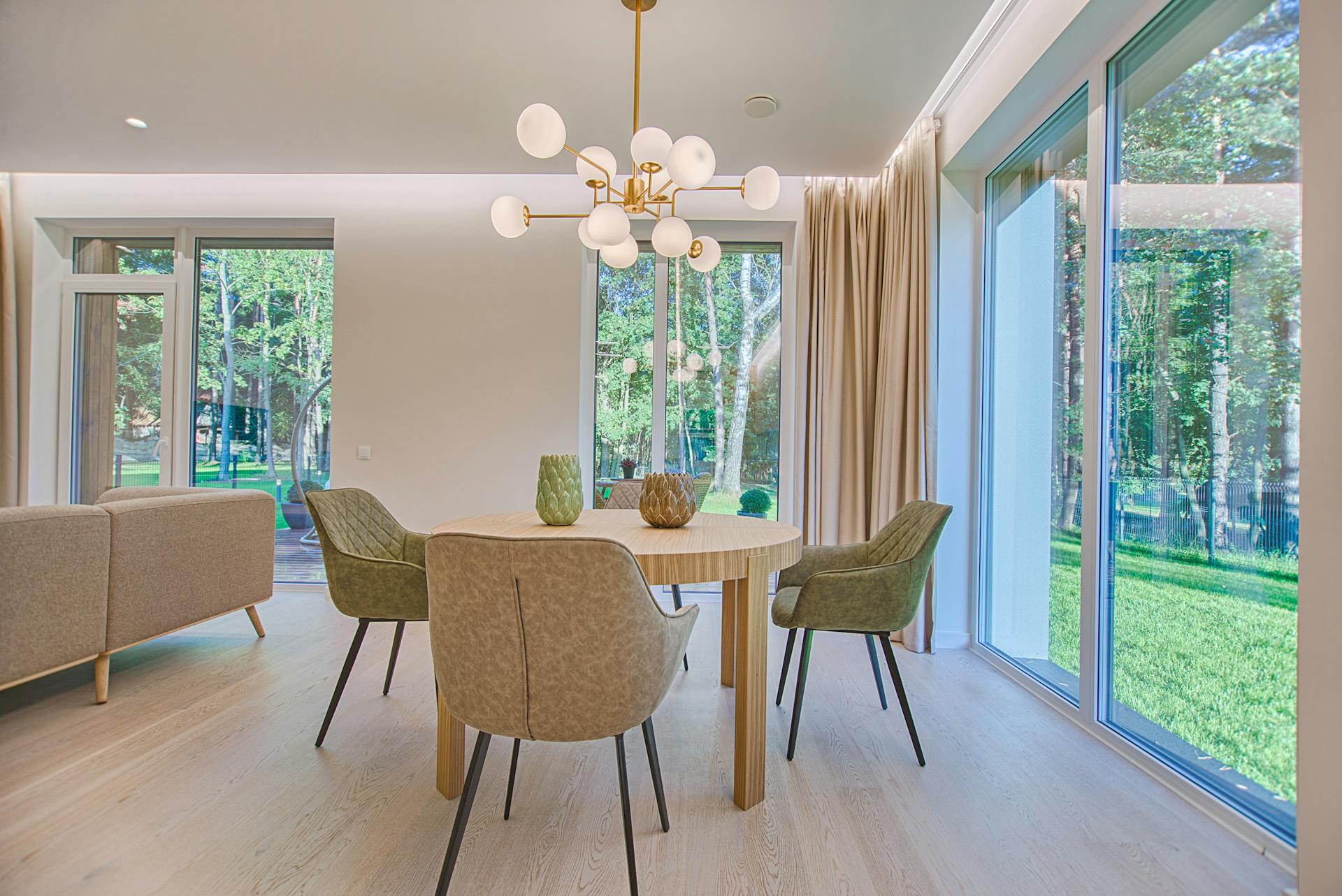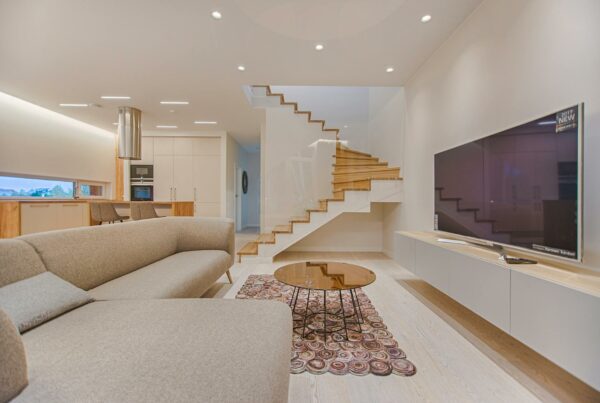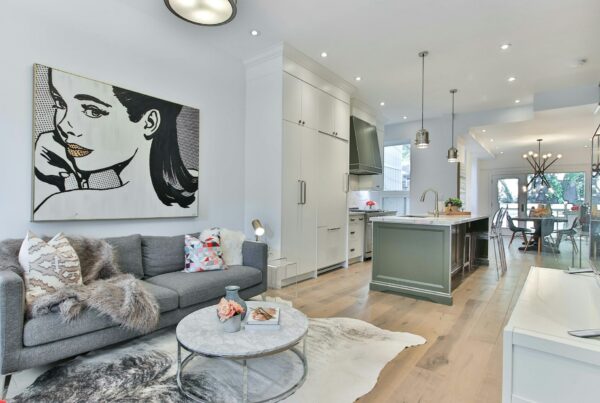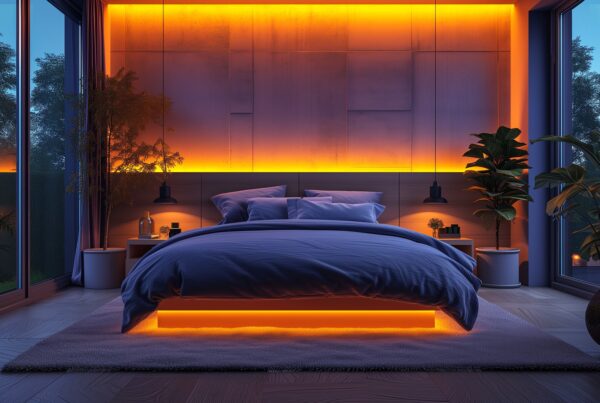Last Updated on March 3, 2024
In the ever-evolving world of home design, the allure of modern aesthetics remains a constant beacon for those looking to transform their living spaces. Modern home design, characterized by its clean lines, open spaces, and emphasis on functionality, continues to captivate homeowners and design enthusiasts alike.
However, amidst the fleeting trends and changing tastes, certain principles stand the test of time, ensuring that a home not only looks contemporary but also retains its appeal years down the line. Let’s delve into four timeless principles that form the cornerstone of modern home design.
Minimalism: The Art of Less is More
Minimalism, with its origins deeply rooted in the early 20th century, has emerged as a defining feature of modern home design. This principle champions the idea of simplicity, advocating for a clutter-free and harmonious space.
The minimalist ethos is encapsulated by the mantra “less is more,” promoting clarity, ease of maintenance, and a reduction in stress through the elimination of unnecessary elements. The aesthetic appeal of minimalism lies not only in its visual simplicity but also in the sense of calm it brings to a space.
By focusing on essential elements, minimalism allows the beauty of each piece to stand out. It encourages us to value the items we choose to surround ourselves with, fostering a more intentional and mindful approach to living.
The minimalist design also proves that style and functionality can coexist, creating spaces that are both aesthetically pleasing and fully usable. This approach can make even the smallest spaces feel expansive and luxurious. Embracing minimalism can also lead to a more sustainable lifestyle, as it encourages reducing waste and focusing on quality over quantity.
This mindset can extend beyond the home, influencing our decisions and interactions in various aspects of life.
Functionality and Flexibility
Functionality is paramount in modern home design. A well-designed space not only looks good but also serves the needs of its inhabitants effectively. Flexibility, a companion to functionality, ensures that a home can adapt to changing needs and lifestyles.
This principle is particularly relevant in today’s fast-paced world, where the functionality of a space can significantly impact our daily routines and overall well-being. The design should cater not only to current needs but also anticipate future changes, making spaces that can evolve with their users.
Smart storage solutions and adaptable room layouts are key, offering creative ways to maximize space and utility. By prioritizing functionality and flexibility, homes can become enduring sanctuaries that support a variety of activities and lifestyles.
Rooms designed with multiple uses in mind, such as guest rooms that double as home offices, embody this principle in practice, providing practical solutions for modern living. Additionally, this focus on adaptability can enhance the home’s resale value, as future buyers will appreciate the thoughtful design and versatility of the space. It’s a win-win approach that marries immediate utility with long-term foresight.
Embracing Natural Light and Elements
The use of natural light and elements is a hallmark of modern home design, creating spaces that feel connected to the natural world. Large windows, skylights, and strategically placed mirrors can maximize natural light, making rooms feel larger and more welcoming.
Incorporating natural materials such as wood and stone adds warmth and texture, creating an organic feel that complements the clean lines of modern design. This connection to nature not only enhances the aesthetic value of a home but also promotes physical and mental well-being. Natural light has been shown to boost mood and productivity, while natural materials bring a sense of tranquillity and grounding.
Professional deck builders, by integrating outdoor living spaces with the indoors, further enhance this connection, making nature an accessible and integral part of daily life. These elements remind us of the world outside our doors, fostering a sense of peace and well-being that is essential in today’s often hectic lifestyle.
The strategic use of natural elements can also play a significant role in the home’s energy efficiency, as materials, like stone and wood provide natural insulation, and large windows, can reduce the need for artificial lighting.
Sustainability: Building with the Future in Mind
Sustainability has become a guiding principle in modern home design, reflecting a growing awareness of our environmental impact. Eco-friendly design choices, from solar panels and energy-efficient appliances to sustainable building materials, not only reduce a home’s carbon footprint but also promote a healthier living environment.
Designing with sustainability in mind also involves considering the longevity of a home’s design. Opting for timeless aesthetics ensures that a home remains stylish and relevant, reducing the need for frequent updates and renovations. This sustainable approach extends beyond materials and technologies, influencing how we think about the layout and functionality of our homes.
It encourages a holistic view of design, where energy efficiency, environmental impact, and personal well-being are all interconnected. By adopting sustainable practices, homeowners can create spaces that are not only beautiful and functional but also responsible stewards of the environment.
Sustainable design is an investment in the future, ensuring that our homes remain comfortable, efficient, and in harmony with the environment for generations to come. Moreover, it aligns with a global shift towards more responsible consumption patterns, making each sustainable home part of a larger movement toward environmental stewardship.
Conclusion
The principles of minimalism, functionality, and flexibility, the embrace of natural light and elements, and sustainability form the bedrock of modern home design. By adhering to these timeless principles, homeowners can create spaces that are not only stylish and contemporary but also functional, sustainable, and enduring.
As we continue to navigate the complexities of modern living, these principles offer a blueprint for creating homes that meet our evolving needs while remaining true to the essence of modern design. Incorporating these principles into your home design is not just about following trends; it’s about making informed choices that enhance your quality of life.
Whether you’re embarking on a new build or looking to refresh your existing space, remember that the best designs are those that reflect your personal style while adhering to these enduring principles. We invite you to share your experiences or plans for incorporating these principles into your home designs.
Together, let’s continue to explore the possibilities of modern home design, creating spaces that inspire, comfort, and endure for generations to come.





